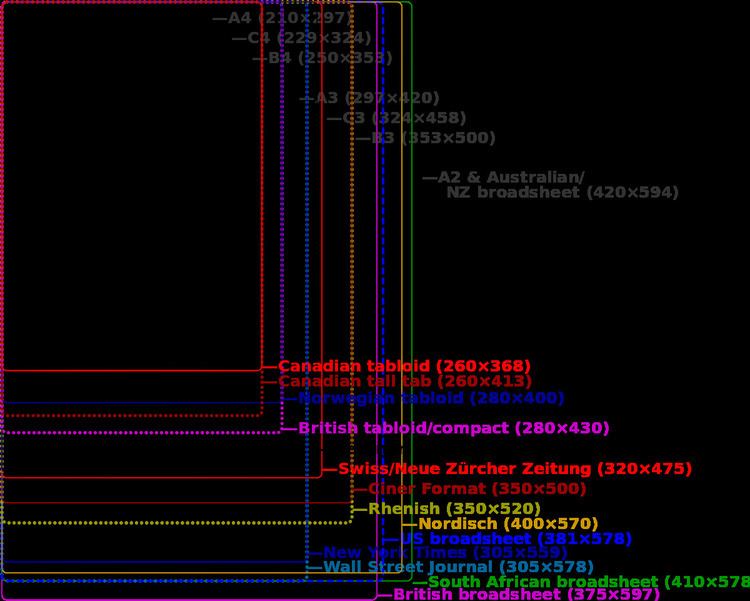 | ||
Newspaper formats vary substantially, with different formats more common in different countries. The size of a newspaper format refers to the size of the paper page; the printed area within that can vary substantially depending on the newspaper.
Contents
In some countries, particular formats have associations with particular types of newspaper; for example, in the United Kingdom, there is a distinction between "tabloid" and "broadsheet" as references to newspaper content quality, which originates with the more popular newspapers using the tabloid format; hence "tabloid journalism".
Trends
Manfred Werfel Research Director and Vice President of IFRA predicts a trend towards the Berliner format.
In a recent trend, many newspapers have been undergoing what is known as "web cut down", in which the publication is redesigned to print using a narrower (and less expensive) roll of paper. In extreme examples, some broadsheet papers are nearly as narrow as traditional tabloids. An average roll of 26.4 lb (12.0 kg), 45 in (110 cm) diameter newsprint rolled out is 9.7 mi (15.6 km) long.
